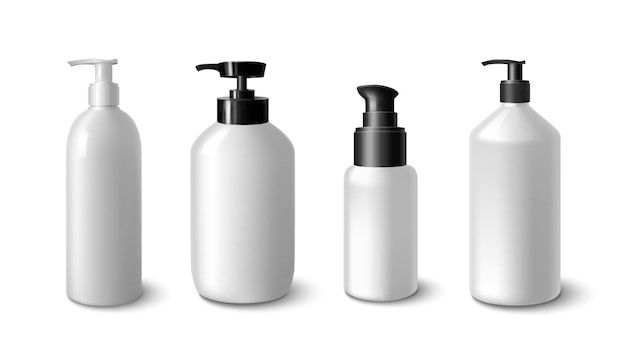with all the news coverage of the ebola virus and how rapidly the infection can spread, little has been covered about another important measure that ensures the virus doesn&rsquot spread &ndash ebola waste management.this is a very serious and vital part to containing infection. the proper disposal of the waste generated by the infected person if done improperly, creates a high risk of further infection. 1the pipeline and hazardous materials safety administration phmsa is charged with developing and enforcing federal hazardous materials regulations hmr for the &ldquosafe commercial transport of hazmat in interstate, intrastate and foreign commerce by aircraft, railcar, vessel, and motor vehicle&rdquo. 2as a preventative measure, the phmsa issued the usdot united states department of transportation &ldquosafety advisory packaging and handling ebola virus contaminated infectious waste for transportation to disposal sites&rdquo.this publication &ldquoprovides an inventory of all relevant information phmsa has issued for the reference of state and local governments in dealing with the waste, including guidance on packaging&rdquo.the centers for disease control and prevention cdc has stated that &ldquoinfection control is a key strategy in stopping the spread of ebola and identifying and managing patients with the ebola virus.&rdquo 3in a section titled &ldquoebolaassociated waste management&rdquo, the cdc provides further information about the safe handling of ebola waste and the proper steps for transporting and disposing of evd ebola virus disease waste. 4these guidelines are the same basic principles that are outlined in the u.s. occupational safety and health administration osha bloodborne pathogen standard, 29 cfr 1910.1030. the hmr regulates such infectious substances as ebola, a category a infectious substance under the us department of transportation dot hazardous materials regulations hmr 49 c.f.r., parts 171180.variance in hmr regulations and special permitsthe dot determines which materials under the hmr requirement pose &ldquounreasonable risk to health, safety, and property when transported in commerce.&rdquo all offsite commercial transporting of ebolaassociated waste is required to comply with the hmr regulations.if for some reason, there is a variance required to the hmr regulations, then a special permit under 49 cfr § 107.105 must be obtained. this is granted only if the applicant can prove to the dot that &ldquoalternative packaging will achieve a safety level that is 1 at least equal to the safety level required under the hmr, or 2 consistent with the public interest if a required safety level does not exist.&rdquo 2there have been &ldquomultiple special permits authorizing the transportation in commerce of certain ebolaassociated waste&rdquo issued so far by the dot. these often included ebolaassociated waste that was &ldquoappropriately incinerated, autoclaved, or otherwise inactivated is not infectious&rdquo 3. this type of ebola waste, according to the cdc, isn&rsquot a health risk and isn&rsquot considered medical waste or hazardous material.since this type of ebola waste is no longer infectious, it&rsquos no longer considered a category a and subject to hmr. while this is true of federal laws, some states, local and even osha regulations may require strict disposal protocols of inactive or incinerated ebolaassociated waste.special transportation permits for ebola wastespecial permits are required to transport any &ldquosuspected or confirmed ebola contaminated waste&rdquo. there are just two ways that ebola waste can be transported. the first must meet hmr classification and packaging requirements. the second is &ldquounder the terms of a special permit&rdquo. 5 the packaging that was available for category a infectious waste wasn&rsquot large enough for the volume of waste an ebola patient generates. this required the development of alternative packaging. this was allowed under an emergency special permit. the permit issued to stericycle in texas was the first of its kind and was designed so it could be used anywhere in the us. the permit allows for the disposal of confirmed and suspected ebola waste. in addition, this special permit can be issued as a &ldquoparty status&rdquo, which allows companies to &ldquotransport infected waste using the same special permit&rdquo.due to the volume of waste disposal associated with ebola patients and their treatment, the special permit doesn&rsquot &ldquospecific type of packaging&hellip&rdquo in fact, it allows for a &ldquodegree of flexibility in packaging design&rdquo.this flexibility means that packaging can be modified to accommodate the specific needs of those companies collecting and those of the disposal facility. this doesn&rsquot mean that the level of safety to the public is to be compromised. the packaging must still meet all of the special permit performance requirements.sharpsmartseven companiesthe dot reports that as of 10282014, seven companies have obtained &ldquoparty status&rdquo under the new provisions stated under this special permit. the most recent special permit can be found by conduction a search for &ldquo16279&rdquo on the dot&rsquos special permits search page.the seven companies that have special permits and party status include&ndash> veolia es technical solutions, llc&ndash> triumvirate environmental, inc.&ndash> stericycle, inc.&ndash> smith systems transportation, inc.&ndash> advanced environmental options, inc.&ndash> clean harbors environmental services, inc.&ndash> daniels sharpsmart, inc.how active and infectious contaminated waste is transportedwhile the dot has jurisdiction over transportation, it&rsquos quick to point out that the department also works &ldquoclosely with cdc, osha, hhs, dod, epa, and state and local government to assure that our respective safety missions are adequately addressed in these scenarios.&rdquothe requirements of the special permit are designed to provide key operational controls that include&ndash> transport vehicle must be attended at all times.&ndash> each commercial motor vehicle and driver must be made available for a commercial vehicle safety alliance level i hazardous materials inspection prior to transport.&ndash> carrier must maintain written spill response plan with guidelines for protecting employees and decontaminating any released material in the event of an accident.&ndash> carrier must adhere to strict packaging requirements, including a series of inner and outer packaging and the application of a disinfectant recommended by the center for disease control to the inner packaging.&ndash> outer packaging must meet specified performance requirements.protocols in place are governed by these dot regulations for the transportation of infectious ebola waste. the special permit requirements are designed to ensure that the public isn&rsquot exposed to the waste generated by the caring of ebola patients. 






